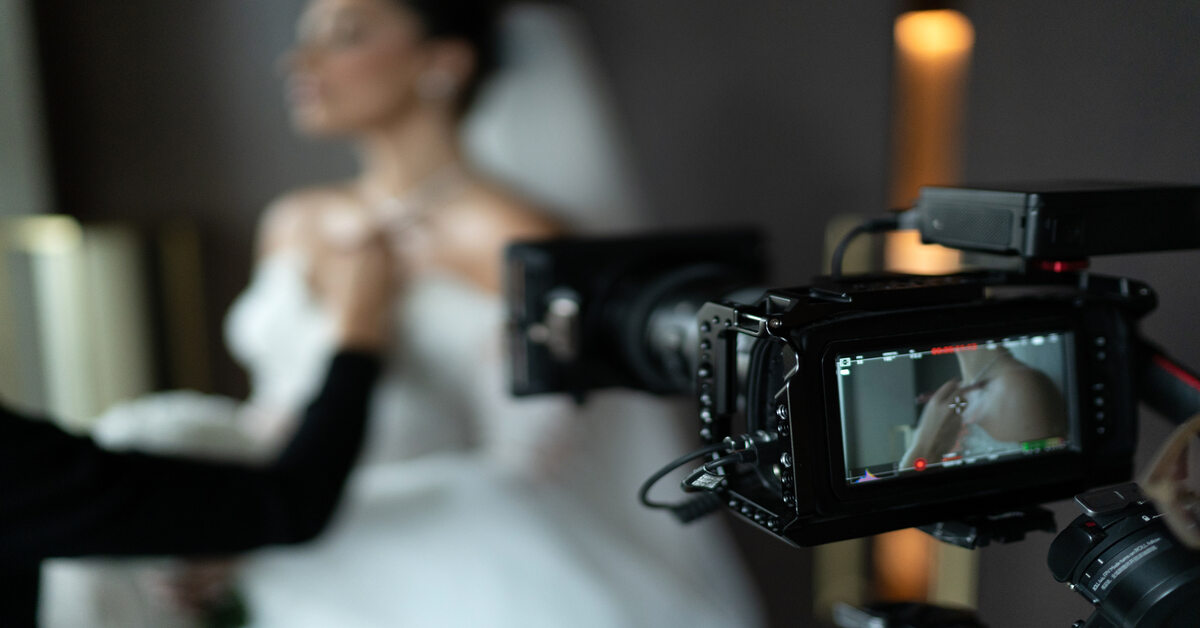Wedding video is not the mere filming, it is rather the narrative of the two individuals entering a new phase in their lives. Photography captures the time of the day, but videography brings to life the laughs, the cry, the songs, and the dynamism of the day. These tips of filming a wedding video can be followed by both a beginner videographer and a couple who want to record your big day and create a moving, emotional, and beautiful wedding film.
1. Plan Before You Film
Everything is in preparation for wedding videography. The couple is meant to meet before the big day to know the vision. Inquire about the schedule, notable events and poignant things that they would like you to concentrate on like a family heirloom, a significant speech, or a surprise dance.
Key pre-shoot steps:
- Discuss the timetable with the wedding planner.
- Check out the facility at the time of visit to test the lighting and sound.
- Get ready the back-up equipment, batteries, SD cards.
By pre-plotting all the angles, you can get natural and emotion-driven shots rather than having to scramble up and down the ceremony.
2. Master the Art of Storytelling
A wedding film cannot be just a montage; it is a story. Between the expectation of the preparation process and the happiness of the first dance, it is the narration that makes the video clips turn into emotional recollections.
Craft your video in three acts:
- Act 1: Preparation – The quiet anticipation, details of attire, and family moments.
- Act 2: Ceremony – The vows, reactions, and raw emotions.
- Act 3: Celebration – Speeches, laughter, and dancing.
Add transitions that reflect the couple’s personality, and let the story unfold naturally instead of forcing cinematic effects.
3. Focus on Natural Light
A wedding video can or can make it or break it with lighting. As much as possible, use soft, natural light, early morning or golden hour at sunset are good times of day to use.
It is important to avoid a strong midday sun which casts shadows. In the house, warm LED panels or window light should be used. In case of night filming, carry soft diffused lights that will not make the scene appear unnatural by illuminating the faces.
Pro tip: When using a pair or more cameras, it is always best to make the difference in the white light so that the footage appears similar during editing.
4. Capture Clear Audio
Sharp sound is as vital as beautiful images. The professional speaker needs to feel the words he is saying and feel the toast because a heartfelt vow or emotional speech swept away by the noise will not work.
To ensure perfect sound:
- Get wireless lapel mic on the couple and officiant.
- Take ambient sound with a shotgun microphone.
- Provide back-up sound recorders at the location.
You must also record minor sounds like footsteps, laughter or music that will make the video sound real.
5. Get Creative with Angles and Movement
Never repeat the shots, always make them different. Blend panoramic shots to achieve greatness, medium shots to tell a story and close-ups to express feeling.
During processions, drone shots give an aerial view and static tripod shots give a formal view such as speeches. The idea is balance, too many motion shots will be dizzying, and too many stills will appear to be lifeless.
The videos of the weddings in the cinemas are prosperous in the visual rhythm and the energized composition.
6. Film the Details That Matter
It is the little things that can be the most meaningful: the giving of rings, a handwritten promise, the lace on a dress, a weepy smile on a parent.
Insert close-ups of these scenes between larger scenes. They make the final movie experience personal and all-embracing, as well as, they are gorgeous intermediaries between the key scenes.
7. Coordinate with the Photographer
The purpose of wedding photographers and videographers is similar: they have to narrate the love story in the most beautiful manner. Ensure that you communicate and work together as opposed to fighting over space.
Agree on angles at some crucial points such as the kissing part, first dance or the cake cutting. This will also make sure that both professionals receive the shots they require without interfering with the work of each other.
A seamless collaboration leads to a more flowing experience of the couple and a superior total footage.
8. Use Music to Evoke Emotion
The tone of the storytelling is predetermined by music. Select music to fit the tone of each moment: soothing piano music on the day she says yes, fast music on the wedding party, and music that is emotional on the highlights reel.
Do not use a song that has been copyrighted without the right license. The free music platforms such as Epidemic Sound or Artlist have good cinematic music options, which can be used on a wedding video, free of charge.
9. Edit for Emotion, Not Just Perfection
As detailed in a professional wedding film editing guide, the magic happens in post-production. While technical editing is essential, your real goal is to evoke emotion. Focus on pacing, transitions, and the natural flow of moments.
Cut between shots that tell a story, a nervous glance before walking down the aisle or a spontaneous laugh during speeches. Add gentle color grading for warmth and continuity.
Pro editing tip: Keep highlight reels under 5 minutes for maximum engagement, while full-length films can span 20–30 minutes for deeper storytelling.
10. Deliver with Professionalism
Everything depends on a professional delivery. Break into sections and make the final video into highlights, ceremony, and reception and offer both online and physical copies.
Provide social media teasers and full-size alternatives as takeaway gifts. Good packaging, attention to details and delivery on time make your brand bigger and give unforgettable impressions.
FAQs
1: What’s the best camera setup for shooting a wedding?
A full-frame mirrorless or DSLR camera with good low-light performance is ideal. Popular options include the Sony A7 series or Canon R5. Pair it with fast lenses like a 24–70mm f/2.8 for versatility and a 50mm f/1.4 for cinematic portraits. Always carry backup batteries and dual memory cards for reliability.
2: How can I make wedding videos look more cinematic?
Apply depth of field (shallow focus), natural light, and flow motion of the camera. Change the tones and include some emotional music during post-production. It is all about storytelling, giving moments to naturally breathe rather than editing with speed and filters.
Final Thoughts
There are moments in weddings that we have never experienced before that should be captured with utmost care and skill. The top tips of the wedding videos are based on preparedness, teamwork, and emotion. No matter which is the first wedding you shoot or which is your bonus time, it is not about the most sophisticated equipment, but about capturing love, bonding, people on the move.
Ignite the camera with the heart and each frame is an everlasting story.

